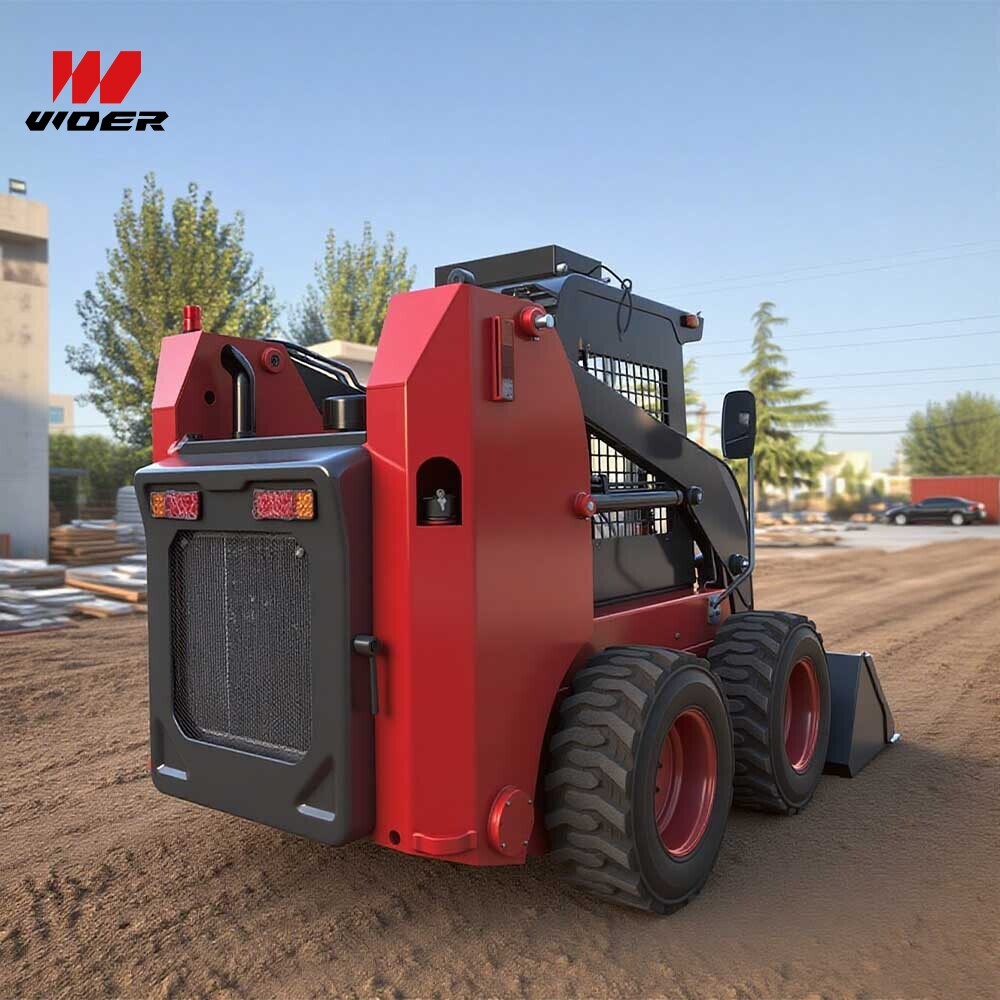Navigation
Contact us
Phone
Message

This maintenance checklist targets operators, technical evaluators and purchasing teams responsible for heavy equipment skid steer loader fleets. It covers daily through annual tasks, diagnostic tips for track skid steer loader diesel models and guidance for selecting small skid steer loader or mini skid steer wheel options to maximize uptime and total cost of ownership.
Overview: Why a Formal Maintenance Program Matters
Skid steer loaders — from mini skid loader wheel machines to full-size tracked diesel units — are critical assets in lumber processing yards and timber handling operations. Regular, documented maintenance reduces unexpected downtime, protects hydraulic and engine systems, extends component life, and improves resale value when you evaluate skid steer loaders for sale later. A structured checklist supports safe operation, predictable budgets and compliance with industry norms such as ISO, ASTM and applicable EN standards.
Daily Pre-Shift Checks (Operators)
Operators should perform a concise pre-shift sequence to catch issues early. These checks are most important for high-utilization machines like cheap skid loaders for sale often used intensively in wood-processing yards.
- Visual inspection of tracks or wheels: look for cuts, missing lugs, loose bolts on mini skid steer wheel loader hubs and track tension for track skid steer loader diesel units.
- Fluid checks: engine oil, coolant level, hydraulic oil sight glass, and fuel. Top off where safe and necessary.
- Safety systems: verify ROPS/FOPS integrity, seat belt condition, horn, backup alarm and lights.
- Controls and hydraulics: cycle lift and tilt to confirm smooth response and no unusual noises or leaks.
- Attachments and pins: inspect quick couplers, attachment pins and mounting plates for wear and securement.
Weekly and Monthly Tasks (Technicians)
Technicians should use a written log for weekly and monthly maintenance to support technical evaluations and warranty claims. Below is a concise matrix summarizing common intervals.
Fluid Management and Engine Care
Diesel engines and hydraulic systems are the highest cost items if neglected. For track skid steer loader diesel units, maintain a strict oil change interval based on operating hours and severity. Use OEM-recommended oils and documented specifications. Replace hydraulic filters per manufacturer intervals and sample hydraulic fluid annually for contamination and viscosity analysis to detect early wear or coolant ingress.
Key parameters to record: engine hours, oil consumption, fuel filter change date, hydraulic filter change date, coolant freeze point and radiator condition. These metrics improve forecasting for procurement of replacement units or parts when comparing skid steer loaders for sale options.
Tracks vs Wheels: Maintenance Differences
Whether your fleet includes small skid steer track loaders or mini skid steer wheel models, maintenance emphasis changes:
- Tracked machines: monitor track tension, undercarriage wear (rollers, sprockets, idlers), and ensure debris is cleared to prevent premature wear.
- Wheeled machines: focus on wheel stud torque, tire tread and sidewall integrity, and hub seal inspection for mini skid steer wheel loaders used around sawdust and wood debris.
Common Failure Modes and Troubleshooting
Recognizing early failure signs prevents escalations. Typical symptoms and corrective steps:
- Loss of hydraulic power: check hydraulic fluid level, filter clogging, and control valve function. Perform pressure tests if needed.
- Engine overheating: inspect coolant level, radiator cleanliness, fan clutch operation, and coolant mixture per manufacturer guidance.
- Track derailment: stop operation immediately, inspect sprocket and idler wear, and realign tracks following OEM procedures.
Documentation, Diagnostics and Standards
Keep a maintenance log that includes serial numbers, service dates, part numbers, and shop notes. Use diagnostic tools compatible with the machine’s ECU to read fault codes. Reference international standards such as ISO 20474 (earth-moving machinery safety) and relevant ASTM/EN norms when specifying replacement parts or approving modifications to attachments. These practices support equipment appraisal and increase trust during commercial evaluations of skid loaders free shipping deals or purchases.
Procurement & Cost Factors for Buyers
When evaluating skid steer loaders for sale, assess lifecycle cost, not just purchase price. Consider factors like fuel efficiency for track skid steer loader diesel machines, availability of spare parts, warranty terms, dealer service coverage, and whether options like mini skid loader wheel or small skid steer track configurations match your operations. Cheap skid loaders for sale may offer lower upfront cost but higher long-term maintenance expenses if core systems are underspecified.
Safety, Storage and Transportation
Follow safe loading practices and tie-down protocols for transport. Store machines under cover where possible to reduce corrosion and protect electrical systems. For long-term storage, stabilize fuel and follow manufacturer preservation steps including battery maintenance and periodic run-up to prevent seals from drying.
Best Practices for Fleet Managers
Implement scheduled audits, use condition-based maintenance when sensors permit, and train operators to complete pre-shift checklists. A central maintenance record improves decision-making when evaluating trade-ins or purchasing additional units such as small skid steer loader or mini skid steer wheel loader models.
Quick Checklist Summary
Maintain a visible checklist on each machine with the following minimum items: daily visual and safety checks, weekly lubrication, monthly fluid and filter inspection, quarterly hydraulic system review and annual full-service including diagnostics and fluid sampling. Record every completed action against engine hours.
Final Notes
Regular maintenance is an investment that pays back through reduced downtime, safer operations and better resale value. Whether you manage a fleet of cheap skid loaders for sale models, compact mini machines, or robust track skid steer loader diesel units, a disciplined program informed by standards and data drives performance. Reach out to schedule an equipment health audit or to request a downloadable, customizable maintenance checklist tailored to wood-processing environments.

This stunning beach house property is a true oasis, nestled in a serene coastal community with direct access to the beach.
Contact
West Street, Melbourne Victoria 3000 Australia